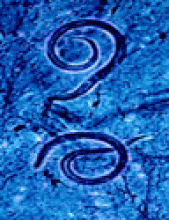Abstract
Background: Recent reports suggest that Clostridium difficile colitis may be evolving into a more severe disease. During the second half of 2002 we noted an increase in the number of patients with severe C. difficile-associated diarrhea (CDAD) in our institution. We describe cases of CDAD at our institution over a 13-year period and investigate changes in illness severity.
Methods: We undertook a retrospective chart review of all cases of CDAD diagnosed at the Centre hospitalier universitaire de Sherbrooke from Jan. 1, 1991, to Dec. 31, 2003. Because the hospital serves a well-defined population of Quebec, we were also able to calculate population-based incidence during this period. We abstracted data on individual patients from patient charts and from hospital and pharmacy computer databases. We defined cases of CDAD as having a positive C. difficile cytotoxicity assay result, or endoscopic or histopathological evidence of pseudomembranous colitis. A case was considered complicated if one or more of the following was observed: megacolon, perforation, colectomy, shock requiring vasopressor therapy, or death within 30 days after diagnosis.
Results: A total of 1721 cases of CDAD were diagnosed during the study period. The incidence increased from 35.6 per 100 000 population in 1991 to 156.3 per 100 000 in 2003; among patients aged 65 years or more, it increased from 102.0 to 866.5 per 100 000. The proportion of cases that were complicated increased from 7.1% (12/169) in 1991–1992 to 18.2% (71/390) in 2003 (p < 0.001), and the proportion of patients who died within 30 days after diagnosis increased from 4.7% (8/169) in 1991– 1992 to 13.8% (54/390) in 2003 (p < 0.001). A high leukocyte count (20.0 х 109/L or greater) and an elevated creatinine level (200 μmol/L or greater) were strongly associated with adverse outcomes: in 2003, 45 (40.9%) of 110 patients with a high leukocyte count or creatinine level, or both, had complicated CDAD and 28 (25.5%) died within 30 days after diagnosis. After adjustment for age and other confounding factors, patients initially given oral vancomycin therapy had a risk of progression to complicated CDAD that was 79% lower than the risk among patients initially treated with metronidazole (adjusted odds ratio 0.2, 95% confidence interval 0.06–0.8, p = 0.02).
Interpretation: An epidemic of CDAD with an increased case-fatality rate has had important consequences on the elderly population of our region. Our observational data suggest that the equivalence of vancomycin and metronidazole in the treatment of CDAD needs to be questioned.











